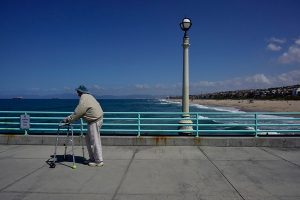
Immobility in old age can decrease independence and quality of life, as well as increase the risk of falls and chronic disease. Studies such as Lifestyle Interventions and Independence for Elders (LIFE), a large multicenter randomized controlled trial, have shown that regular structured physical activity can reduce mobility loss in older adults.
Do these types of programs work as well in real-world environments as well as controlled conditions?
The short answer is yes. Tufts University researchers led in a small pilot study that attempted to translate the physical activity benefits of the LIFE clinical trial into a community senior center setting. Participants who attended at least 25 percent of scheduled weekly physical activity classes demonstrated sustained improvements in their mobility over a six-month period.
The researchers also found that the physical activity program was associated with increases in executive cognitive function, improvements in quality of life, and about a 60 percent reduction in occurrence of falls.
The study’s goal was to test whether physical activity intervention could safely and effectively be integrated within a senior center’s existing infrastructure, according to lead author Kieran Reid, Ph.D., M.P.H., a scientist in the Nutrition, Exercise, Physiology, and Sarcopenia Laboratory at Tufts USDA Human Nutrition Research Center on Aging.
For the Tufts study, 40 adults age 65 to 89 with mobility limitations participated in the pilot. Half of them were randomly assigned to a structured program of walking, strength, flexibility and balance training. The rest participated in a health education control group. Researchers compared the two groups’ adherence rates, mobility levels, cognitive function, quality of life, depressive symptoms the risk of falling after six months.
The research team concluded that bringing physical activity intervention from a controlled clinical environment into a community setting for older adults was safe and feasible, according to a July 16 report in the Journal of Gerontology: Medical Sciences.
While that study was small and of limited duration, the Tufts team is developing a larger-scale translational study to demonstrate the impact of a physical activity intervention in a variety of community settings.
We already know that exercise has many advantages for older people. As Reuters reported in 2017, exercise increases mobility and minimizes problems, such as hip fractures, diabetes and heart disease. The benefits of increased mobility include greater community participation, less social isolation and improved access to health services, according to a piece in the Journal of Preventive Medicine and Public Health. U.S. News & World Report profiled efforts by several states to help keep older adults active. A story in the Herald-Tribune of Sarasota, Fla., recently described a variety of ways elders can get some regular exercise. This NIH Fact sheet on older adults and disability will be helpful in your reporting.
Journalists may want to look at local efforts to help seniors maintain mobility. Here are some examples:
- This tai chi program in Tahlequah, Okla.
- This fitness program in Dothan, Ala.
- The story from Taos, N.M., that explores the many benefits of hiking.








